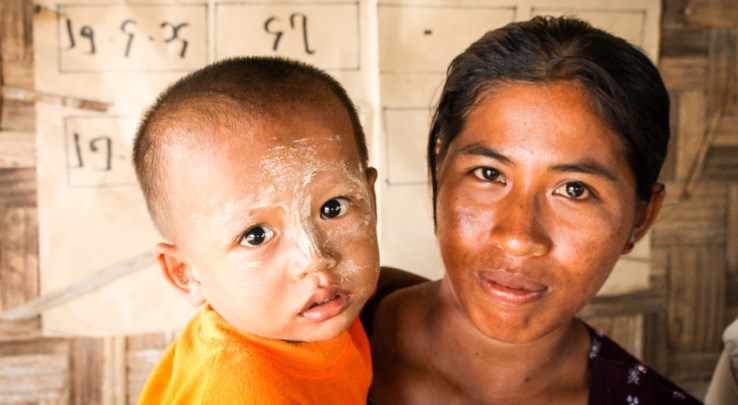Myanmar: Civil Society Organisations come together to tackle malnutrition
About the author: Sylvia Szabo is a Nutrition Policy and Advocacy Adviser in Save the Children’s Research and Policy department.
While Myanmar has been developing rapidly over the last few decades, the rates of child malnutrition continue to be worryingly high. UNICEF data and the results of the newly released 2015-16 Demographic and Health Survey (DHS) show that the prevalence of stunting at the national level decreased from 41% in 2003 to 29% in 2015.

Mg Pyae Phyo Win from Sagaing region, Myanmar was underweight but recovered after his mother, Ma Sandar, was given nutrition advice by a Save the Children health worker. (photo: Lynette Lim/Save the Children)
About the author: Sylvia Szabo is a Nutrition Policy and Advocacy Adviser in Save the Children’s Research and Policy department. This blog was originally published by Save the Children Myanmar on 6 December 2016. View the original article.
While Myanmar has been developing rapidly over the last few decades, the rates of child malnutrition continue to be worryingly high. UNICEF data and the results of the newly released 2015-16 Demographic and Health Survey (DHS) show that the prevalence of stunting at the national level decreased from 41% in 2003 to 29% in 2015.
However, while these trends are commendable, they hide wide socio-economic and regional inequalities. For example, the prevalence of child stunting in the poorest households is approximately 38%, while for richest households it is around 16%.
Given the challenges of combatting malnutrition, local and international NGOs have been increasing efforts to coordinate their projects, interventions and advocacy. A key platform for NGOs to share their work on tackling malnutrition is the Scaling Up Nutrition Civil Society Alliance (SUN CSA) Myanmar. At its second annual General Assembly meeting in Yangon on 22–23 November 2016, the SUN CSA network brought together around 85 participants working on nutrition issues across the country. Government officials from the National Nutrition Centre and the Food and Drug Administration of the Ministry of Health and Sports also attended.
The meeting was facilitated by Jennifer Cashin, interim Nutrition Adviser, Save the Children Myanmar. It featured presentations from Elizabeth Whelan (Save the Children International, Myanmar), myself, local and international NGO members, and government officials. The meeting provided an opportunity for participants to share experiences from their respective regions and work on identifying key drivers of malnutrition across different agro-ecological zones.
Towards the end of the meeting, the participants identified a set of potential solutions for tackling the underlying causes of malnutrition. They also proposed concrete actions on how to overcome drivers of malnutrition from both geographic and sectoral perspectives. Participating organisations committed to increased collaboration, coordination and knowledge sharing. The next steps involve developing a strong coordinated advocacy approach for increased financing and accountability for nutrition in Myanmar.